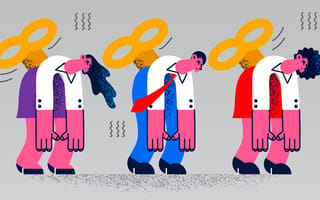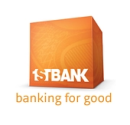Even when burnout is at an all-time high among professionals from a wide range of industries, it’s still not easy to spot.
According to LogRhythm Senior Director of Software Engineering Angie Lawn, remote work has made it more difficult to notice changes in body language, which often reveal signs of workplace fatigue. That’s why leaders need to actively look out for a range of behavioral changes typically related to burnout.
“Look for various signs, such as an increase in time off, especially during periods of high stress,” Lawn said. “You may also notice overworked team members struggling to finish tasks or delivering low-quality work.”
While managers must do their part to recognize exhaustion in employees, they must also foster open dialogue surrounding it. Agathos Chief Technology Officer Tynan Szvetecz added that it’s critical for leaders to establish a shared language and framework for conversations regarding burnout, which cultivates a resilient culture. “Structure can turn teams into sustainable, high-performing organizations,” he said.
In fact, taking the time to create a positive environment prior to stressful situations plays a large role in both mitigating and preventing burnout. FirstBank Associate Software Delivery Manager Maly Lor said managers should focus on building connections with team members in addition to checking in frequently and encouraging them to use wellness perks, such as teletherapy and paid time off. In doing so, leaders can inspire others around them to prioritize their personal well-being and ultimately avoid fatigue in the future.
Built In Colorado caught up with Lawn, Szvetecz, Lor and Human API Senior Vice President of Sales Tony Diodato to garner their insight on identifying, managing and preventing burnout.
LogRhythm offers various security and event management solutions. The company’s products serve a wide range of purposes, from simplifying security operations to monitoring networks in real time.
How can you tell when an employee is feeling burned out?
There are many different signs of burnout, so it’s important to check in with team members regularly in order to identify subtle changes in behavior or work performance. It’s also essential to look out for employees who seem disengaged during meetings, team events or one-on-one conversations. Additionally, burned out employees can appear on edge and become defensive during interactions with team members or when processing feedback. A previously positive and engaged team member who becomes negative about their work, team or organization is likely experiencing burnout.
How should managers react when they realize an employee is burned out?
Begin by helping the employee understand they’re not alone. Not everyone will be able to convey their stress levels or ask for help, so it’s important to recognize that and initiate the conversation. Acknowledge the situation and ask questions about how they’re managing stress, as this will help you decide what specific kind of support they need. Create a plan to ensure they feel comfortable taking time off. Overall, there isn’t a one-size-fits-all approach. Leaders must understand a team member’s needs and work with them consistently to ensure they have a healthy work environment.
It’s crucial to be plugged in, set your own boundaries between work and personal life, and foster a resilient work environment.”
What can managers do to prevent burnout from happening in the future?
Burnout doesn’t happen overnight, and what managers do at the start can keep it from happening in the future. It’s crucial to be plugged in, set your own boundaries between work and personal life, and foster a resilient work environment. Ask yourself, “Have we created a safe space to discuss stress and personal needs, while developing work plans that support time off and regular breaks so people can bring their best selves to work? Are we connecting with team members regularly to look out for changes and celebrating their successes?” If you can answer “yes” to these questions, then you’re doing your part to build a burnout-resistant workplace.

FirstBank is a privately-held financial institution that offers a wide range of services, from online banking to business account management.
How can you tell when an employee is feeling burned out?
When some people experience burnout, they’ll feel exhausted, overwhelmed or hopeless. They may easily become irritated toward other team members, isolate themselves by taking on extra work and stay away from team events and discussions.
How should managers react when they realize an employee is burned out?
React with urgency, offering empathy and support. It takes courage to tell your manager you need help. When a team member approaches me about burnout, I feel grateful they trust me enough to be vulnerable and discuss their situation. If they don’t reach out to me directly, and I notice changes in their behavior, I will check in with them about how they’re feeling.
React with urgency, offering empathy and support.”
What can managers do to prevent burnout from happening in the future?
Managers can prevent burnout by promoting a connective culture. Get to know your team members and have frequent check-ins. Leaders should also encourage team members to use company benefits, such as paid time off, teletherapy or paid volunteering time. Additionally, it’s important to coordinate healthy schedules with team members, show your appreciation, recognize accomplishments and model a healthy work-balance.
Agathos’ platform is intended to help physicians maximize their clinical impact by offering insights related to their practice.
How has our understanding of burnout evolved in recent years?
It’s become more nuanced. Managers generally acknowledge the stress generated by the pandemic, remote work and fractures over sociopolitical issues. Developing situational awareness surrounding employees’ mental health has led leaders to adopt new processes and tools.
How should managers react when they realize an employee is burned out?
The first thing a manager should do is acknowledge burnout and then take action. It’s critical to develop a shared language and framework for conversations surrounding burnout. We develop self-awareness on our own teams using various tools, such as John Gottman’s concept of “team toxins,” which addresses certain behavioral patterns related to stress. Each employee identifies their own toxin, while our managers look for signs of toxins during check-ins. We also have a framework to determine how to resolve symptoms of burnout. While managers are typically expected to ensure employees do their work, it’s up to managers to create an environment that fosters strong performance.
Structure can turn teams into sustainable, high-performing organizations.”
What can managers do to prevent burnout from happening in the future?
Establishing strong frameworks doesn’t merely help managers identify early signs of burnout, but also enables them to prevent it from happening in the future. Managers should also spend a significant portion of their week in one-on-one discussions with direct reports. These meetings should be used to discuss pain points and how to tackle them. We use additional tools, such as 15Five, that allow for weekly, asynchronous check-ins, offering managers an idea of how employees are doing and any trends associated with these feelings. Additionally, leaders should go through team cohesiveness training, such as ScrumAlliance’s three-day seminar, “Agile Leadership — Leading Amazing Teams for Breakthrough Results.”

Human API’s platform is designed to make healthcare data accessible for both companies and consumers. The company’s app can be used for various purposes, such as storing Covid-19 vaccination records and streamlining clinical trial recruitment.
How can you tell when an employee is feeling burned out?
You have to keep a pulse on your people by building relationships, as this makes it easier to identify burnout. Considering this is more difficult to do in a remote-work environment, I use team meetings and one-on-one discussions to build connections, so everyone knows I care about them as people. Building bonds enables me to understand employees’ behavioral patterns, so I can identify when someone may feel burned out.
DIODATO’S BURNOUT PREVENTION TIPS
- Encourage employees to take vacation, as many people don’t use their allotted time off.
- Ask employees to take lunch breaks. It’s important to step away from the keyboard to stay energized.
- Make sure your teammates recognize their progress. Celebrate wins to keep the momentum going.
How should managers react when they realize an employee is burned out?
Upon noticing warning signs of burnout, managers should have an open discussion about it. Leaders should also isolate the situation and identify areas that are controllable. If you or the employee try to target something that cannot be controlled, it can exacerbate the stress and aggravate the feelings of burnout.












